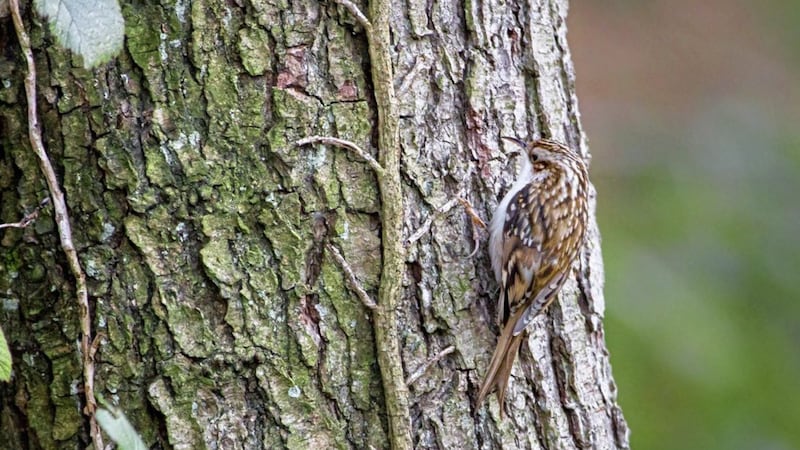THE coming of a new year can affect us all differently. For some, it brings joy and a sense of anticipation for the lengthening days and an easing out of bleak midwinter towards the promise of spring. For others the turning of the year can bring painful memories to the fore, sad reflections, and in many cases a desire in Tennyson’s words to, ‘Ring out the grief that saps the mind/For those that here we see no more.’
Saying farewell to the declining year can also generate a reticence or fear of facing the uncertainties which lie ahead.
As always, the natural world can help us as it shares with us some of its treats in the bareness of winter. During a moment of reflection a few days ago, I was uplifted by the appearance of a mouse-like Treecreeper, spiralling its way up my birch tree working its way around the silver bark, characteristically probing for tiny insects and grubs.
Unsurprisingly, the collective noun for treecreepers is a ‘spiral’. Certhia familiaris is a similar size to the blue tit. Males and females are similar in colour, with greyish-brown upper parts and some white streaking on the crown, while its underparts, including the throat, are white with a slight brownish wash to the flanks.
A quiet, unobtrusive bird, it blends in perfectly with its habitat and rarely ventures out to bird feeders. Its distinctive downward-curved, very pointed bill is used with great effect to probe crevices in tree bark for prey of insects and spiders.
Its common name aptly describes how it finds its food ‘creeping’ up trees using its long claws and stiff, sometimes fanned-out tail to help its ascent. When it reaches the top of a tree, the bird usually flies down to the base of a nearby tree and begins another climb.
Widespread and resident all year in Ireland, it is a secretive bird and mostly seen in broad–leaved and mixed woodlands. Irish treecreepers are thought to be slightly darker than their British counterparts and have been given subspecies status.
The birds can be vulnerable to extreme cold weather when wet snow or rain is followed by a hard frost, encasing trees with ice, especially the cracks and crevices where their food is sealed in.
The common Irish name used for the bird, ‘snag’, is shared in part with the woodpecker (snag darach) and the magpie (snag breac). The name ‘beangán' and the variation 'beanglán', meaning a young branch or shoot, are also used for the bird. These may be referencing its regular use of trees and branches for climbing.
As with the treecreeper’s feeding area, the bird’s nest is also located behind a flap in the tree bark, squeezed loosely into the cavity which usually has two openings, one used as the entrance and the other as the exit.
As I write during a cold bright interlude of weather, the piping call of a great tit rings out. A sound so synonymous with early spring it reminds me that, as the year ends, spring is there on the other side waiting to pull us towards the light and new beginnings.
Like the treecreeper, sunken bulbs and sleeping plants, we’re all waiting for that light to come. Maybe it’s appropriate to end with some more lines of Tennyson from his 1850 New Year’s Eve poem, Ring Out, Wild Bells;
Ring out, wild bells, to the wild sky,?The flying cloud, the frosty light:?The year is dying in the night;?Ring out, wild bells, and let him die.
Athbhliain faoi mhaise daoibh. Happy new year to you all.








